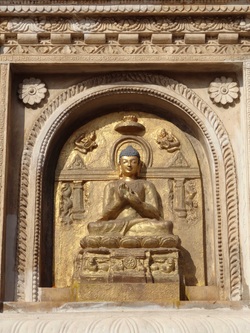
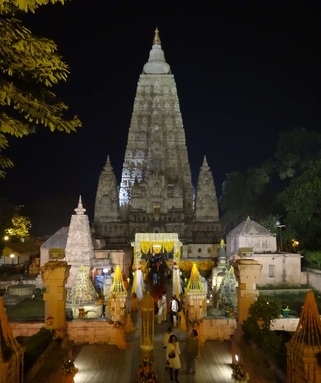
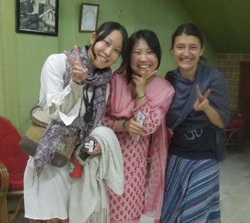
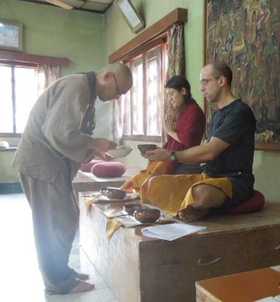
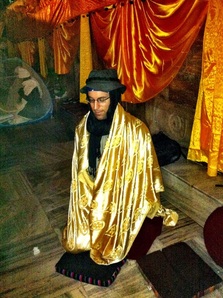
 Bodhgaya is widely considered the most important place in the world for Buddhism. It is here that Siddhartha Gautama sat down under a Bodhi Tree with the intention of not rising until he had seen the truth about existence. In the Zen tradition, it is said that he sat for 7 days and nights, steadfastly returning to the moment despite the distractions that his ego continuously produced. Then, as the sun rose on the 8th day, he had an experience of pure insight. He sat slack jawed as the nature of existence unfurled around him. For the first time, he saw clearly how everything in this world is beautifully impermanent, interconnected, and dependent on each other. Enlivened with his newfound experiential knowledge, a smile of gratitude curled his lips upwards and the new Buddha rose and began his walk to Sarnath, where he would find his previous companions and give his first teachings (see previous post).  Mahabodhi Temple When we arrived in Bodhgaya, we were excited about two things. Firstly, the opportunity to sit and meditate under the Bodhi tree as millions of Buddhist pilgrims have done before. Secondly, we were excited to explore the plethora of monasteries that have been built in Bodhgaya, particularly the Japanese Nippon-Ji Temple, since our own practice of Zen lies within a Japanese lineage. Upon arriving and finding a guesthouse, we headed to the Mahabodhi Temple Complex our first night. The Mahabodhi Temple is a beautiful tower-like stupa next to the Bodhi Tree that was first built by the Buddhist Emperor Ashoka in the 2nd century B.C.E. It was beautifully illuminated, rising sharply into the evening sky with its intricate carvings of Buddha and other symbolic figures. Behind it lay rooted the enormous Bodhi tree, a direct descendant of the original tree, whose massive leafy branches snaked out from the trunk in all directions. Under the green canopy of the tree sat pilgrims in meditation and prayer. Neda and I joined them and I instantly felt a powerful heart opening energy as we settled into the space. In just a few minutes, a group of Thai monks joined the group and their teacher began a teaching on the basics of mindfulness and the eightfold path. How wonderful to sit in this special place and listen to the dharma with other Buddhists!  Riko, Rika, and Neda The next day, we headed off to find the Japanese Monastery, having seen a flyer at dinner the night before advertising that they were practicing the Rohatsu sesshin there. Rohatsu is one of the most important holidays in the Zen tradition, when monks and lay people meditate for 7 days and nights like the Buddha did in the lead-up to Dec. 8th, the day of awakening. We arrived at the temple on the morning of the 5th, and were enthusiastically greeted by Rika, a staff member for the Soto Zen Association of Japan. They still had space for us to join them and were ecstatic that we had some previous experience in the Soto lineage. Strange as it may sound, many of the Japanese young people who had joined for the sesshin had never practiced Zen before, leaving us more amongst the most knowledgeable people of the forms of Soto Zen! Rika, Roshi Ogasawla (the head teacher), and Osho Toha, a priest who had come to assist in the sesshin, welcomed us to stay at the temple for the next 3 nights while we practiced with them.  Toha Osho serving us during oryoki Words can’t describe how warm their welcome was and how relieved Neda and I felt to find a connection to our own tradition in the tumultuous sea of emotions that had been stirred up while being in India. We joined them that very afternoon, sitting zazen, eating oryoki-style meals (formal meals eaten in the zendo), and even bathing Japanese style (sitting on little wooden benches to soap oneself before immersing in a warm tub) in the monastery's communal bathroom! There are 3 jewels customarily spoken of in Buddhism. The first is the Buddha himself, or the aspiration each being has of shedding delusion and finding awakening. The second is dharma, or living in accordance with truth in order to find awakening - this is where the teachings come into play. The final jewel is sangha, or the community of like-minded practitioners who support each other’s practice. For us arriving at Nippon-ji and finding such a welcoming sangha that we could seamlessly join was one of the highlights of our whole trip in India. And it led to very deep meditation as well. As we sat on our cushions, I had a variety of insights which I will share in words here the best I can. While meditating for a long time, I found myself swaying between drowsiness and lethargy on the one hand and distracted thinking on the other. While this is perfectly normal, it occurred to me that both of these states are like bottlenecks on our ability to be open to the fullness of experience in a given moment. If one can manage to sit between these two states in open awareness, the flow of experience is so rich that it makes thinking and sleeping look like shadows of reality, only capturing very limited amounts of what consciousness is capable of. But how can we find this place in the middle? Only by returning to the moment, to the breath, over and over again with as much patience and self-kindness as we can muster.  I also often thought of the Buddha and the great effort he must have put forth to find his own awakening under the tree. On the final night of the sesshin, our group moved from the monastery and did the meditation under the same Bodhi tree where the Buddha sat. As is traditional in the Soto lineage, you can choose to meditate for the whole evening of the final night as homage to the Buddha’s great effort. Neda and I decided to give it a try despite the swarming mosquitoes and dropping temperatures (see the picture of me bundled up with a blanket a fellow pilgrim gave me while under the tree to the left). After all, it was nothing compared to what the Buddha endured, right? Somehow the Buddha had settled his mind to the point that he saw interconnectedness not just as an analytical concept, but as reality itself. From this reality, he saw that as humans our best response to the enormous suffering in the world is to act from compassion and love in all that we do. In doing so, we free ourselves and we free others from the heavy burdens we all carry often without being aware of it. As the night passed, I felt tremendous gratitude not just to the sangha at Nippon-Ji who we had joined for this sesshin, but also for our community at the Missouri Zen Center and Austin Zen Center who have shared and supported this practice with us. I also felt a singular gratitude towards my incredible wife as she sat bundled up under the tree, her face set in deep concentration. Through our travels we have often only been a sangha of two, but two is a powerful number. In the end, the whole experience was like a spiritual booster shot. The warm smile of Osho Toha as he insisted on taking us to his favorite tent for black coffee and masala dosas, Rika’s invitation to come visit her in the mountains in Japan, and the camaraderie and friendship we found with Eric, Nari, Shin-shin, Shitoshi, Riko, and others who practiced with us. Since leaving Bodhgaya, we found our commitment to practice has been strengthened as we hold the three jewels close to our heart. Maybe we didn’t leave enlightened as the Buddha did, but certainly we felt lighter as we headed to our last stop in India, Kolkata. To see the rest of the pics of Bodhgaya click here. To see some pics of our time in Kolkata, exploring the remains of British colonialism at the Victoria Monument and Marble Palace while enjoying the relative calm of India’s only planned city, click here.
1 Comment
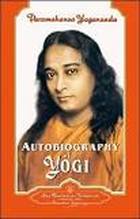 As my 32nd birthday approaches, I have reflected that Buddhism has now played a role in a full half of my life. It started at age 16, when a stressful residential summer school course led me to look for ways to vent the calculus infused steam from my head. At that time, in a little bookstore in Northfield Mount Hermon Massachusetts, I found a little book called “Yoga for Busy People” that would launch my interest in the spiritual life. Yoga asana helped me to find a bit of peace and eventually led to my interest in meditation when I was introduced to the book “Autobiography of a Yogi” by Parmahansa Yogananda at a little metaphysical bookstore that opened on my street while I had been away at school for the summer (strange coincidence that was – perhaps the universe really does offer what you need when you need it). 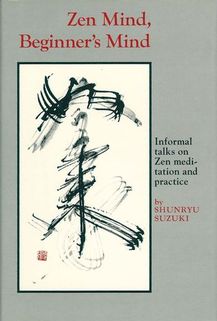 Later that summer I worked in my Dad’s epoxy factory and started talking about my experiences with yoga. Hearing my interest in meditation, the lead chemist at my Dad’s company (and later close family friend) gave me a book that would forever change my life. It was titled, “Zen Mind, Beginner’s Mind” and was written by a Japanese Monk, Shunryu Suzuki, who had come to America and found many Western students interested in learning the practice of Zen Buddhism. I read the book and found Zen meditation truly engaging, but for the next 3 years my focus was on Kundalini meditation as I received mailings from Yogananda’s group SRF (Self-Realization Fellowship) that taught different forms of pranayama (moving energy through the body with breath) for the purposes of opening the mind’s eye to the broader components of the universe. The various meditation practices instantly resonated with me. My previous interest in business management withered as I felt my heart opening to the suffering of people around me. Suddenly I found myself searching for philosophy books in the library and founding a meditation club in my high school for others with interest. 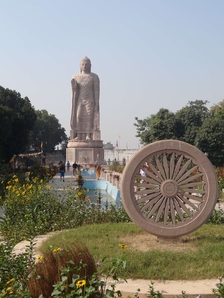 Thai Temple - Sarnath Yogic meditation is very colorful and the path is full of somewhat magical beliefs about the powers attained by yogis in the advanced stages of meditation. As a young person, it was all very exhilarating and at the age of 19, during my first summer after college, I headed out to the SRF monastery for 2 weeks to see if I might want to pursue the life of a monk. But there was a problem that my now philosophically minded viewpoint couldn’t overcome. Yogananda had died years before and to take him as my guru as SRF requested in order to move forward with the training, was a step I was unwilling to take. I hadn’t had any experiences that supported that Yogananda could guide me from the astral plane as the monks suggested. In fact, the whole thing just started to seem too strange and I left the monastery feeling discouraged because I wasn’t able to take the leap of faith required to continue with SRF. 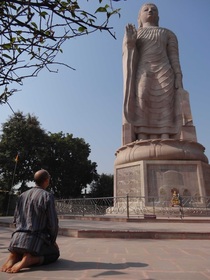 But Zen Buddhism was my life preserver in those choppy seas of self doubt. At that point, I had read Suzuki’s book hundreds of times and regularly practiced Zen along with my yogic practices. I realized that Zen offered me the compassionate and mindfulness based path that SRF had, but without the need for ascribing to beliefs of which I had had no direct experience. In fact, the Buddha always demanded that his students take nothing on faith, but always test his own words in the world of their experiences. This empirical and pragmatic approach was just what a disillusioned yogi needed. Zen became my primary spiritual practice and has stayed so until this day. Zen has been good to me. It brought me wonderful teachers and friends at the San Francisco, Missouri and Austin Zen Centers, and at the Great Sky Temple in Minnesota. It has led to a shared spiritual life with my wife, who immediately reverberated with a lifestyle of mindfulness and compassion when she meditated with me for the first time in St. Louis. It led to our adventure living in the Zen Center in Austin (AZC), Texas for a year, where we found a wonderful (living) teacher in the form of Seirin Barbara Kohn. At AZC, we learned the forms and traditions of Soto Zen and I took the jukai ceremony, sowing a ceremonial mini-robe (rokasu), taking the Buddhist precepts, and being given a Buddhist name by my teacher. Since leaving Austin on our world travel trip, we have left our community (sangha) behind and at times have struggled to maintain our practice with the diligence we had before. 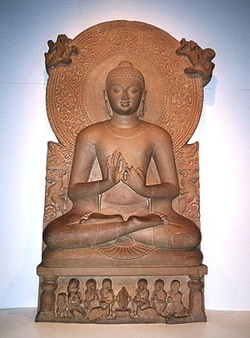 The Buddha giving his first teaching Within this context, we have been very excited about this part of our trip in India. In Varanasi, we explored a city of death, but just 10km outside of it lies an important place of Buddhist Pilgrimage – Sarnath. It is here that the Buddha first came after reaching enlightenment in Bodhgaya. He sought out 5 ascetics who he had practiced with previously to give his first talk, known in Pali as the Dhammacakkhapavathana Sutta. In a peaceful deer park amidst the chirping of birds and the grazing animals nearby, the Buddha told the ascetics of the 4 noble truths. Firstly, that suffering is a part of life. Secondly, that the cause of suffering is our false idea that we have a separate self that exists in isolation from the rest of the world. This fundamental delusion causes craving and attachment which leads to much suffering for ourselves and others. Thirdly, there is a way to see the nature of reality and our interconnection with it, thus ending suffering. Fourthly, this way incorporates ethics, mental training, and philosophy and is called the eight-fold path. The whole eight fold path is outside the bounds of this blog, but for more information it click the link above. When the Buddha finished his speech, it is said that the 5 ascetics, who had already undergone thorough spiritual training of their own, instantly saw the truth and were enlightened. Thus, this place is considered the birthplace of sangha, or the monastic spiritual community. Though in a more liberal sense, sangha has come to mean the community of all like-minded spiritual seekers who wish to support each other in the practice of seeing the true nature of reality and the compassion such a seeing engenders. Along with our new friend Eric from the previous post about Varanasi, we took an autorickshaw out to Sarnath and visited the Dhamekh Stupa, which is said to mark the location of the famous speech. We sat and meditated in the shade cast by the stupa as strings of devotees circumambulated around it while chanting in Thai, Burmese, Tibetan and other languages. Some women next to us brought their prayer boards, where they would sweep down in prostrations, extending their bodies out on the ground, before gracefully rising, lifting their hands in the air and repeating for hours at a time. The setting was peaceful and Neda and I felt the energy of the place was tangible as our minds were transported to 2,500 years ago when the Buddha brought forth a message that would influence our lives so deeply. 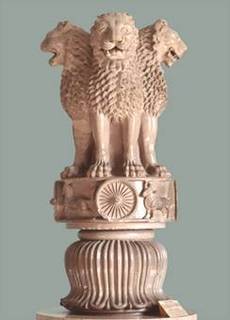 Ashoka Lions The area surrounding the stupa was once a great place of gathering for monks to come and study during the rainy season. Most of the ancient buildings of the libraries and monasteries here have been destroyed, their materials re-purposed for other buildings in Varanasi. But in the modern era, temples from the various nations practicing Buddhism have sprung up around Deer Park. We enjoyed the luxuriant decoration of the Thai Temple and chanted the service at the Japanese Nichiren temple to end the day. We also visited the archeological museum, which featured the Ashoka pillar topped with 4 snarling lions (facing in 4 directions to symbolize the teachings emanating out from Sarnath in all directions) that was placed at the site and has become the symbol of modern India. There is also a spectacular carving of the Buddha assuming the Dharmachakra Mudra, said to represent that first speech. For us, it was a wonderful experience to visit the site, made even more intimate by the presence of our friend Eric who practices in the Tibetan lineage. It really felt like we were making this pilgrimage together as a sangha of different traditions. But in the end, Sarnath would just be a taste of the community and spiritual focus that we would find in Bodhgaya, the place where the Buddha is said to have awakened to the truth. Read about that amazing experience in part 2 of this post! See the pics of Sarnath and some of Bodhgaya here: http://flic.kr/s/aHsjD7kk1j
The next part of our trip took us on a 30 hour journey to the holiest of cities in India – Varanasi. Due to trains being booked out for weeks, we were forced to take a local bus to Dehradun, during which an Indian woman threw up all over the seat right in front of us! That “1 hour” bus took about 2.5 hours as it idled away in traffic with the ubiquitous cacophony of honks desensitizing us. From Dehradun, a sleeper bus took us to Lucknow, where we finally were able to get a train to Varanasi. It is interesting that without any advanced planning, we arrived to the city right on my 32nd birthday! As drinking is pretty shunned here, after the long journey, we settled for celebrating in a small restaurant overlooking Assi Ghat, on the Ganga while our eyelids drooped with the exhaustion of the day’s travel. Ghats are a series of wide-steps that lead down to the river where pilgrims can bathe, wash their clothes, and offer prayer to the holy river. 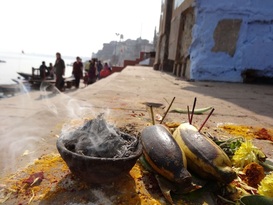 Beautiful offerings along the river In the end, Varanasi was actually one of our favorite cities in India so far; it is hard to explain, but there really is a certain energy in the city. Firstly, it is one of the world’s oldest continuously inhabited cities in the world (dating back to 1200 B.C.) and is one of the seven holy cities for Hindiusm. As Dadi Aum, owner of Aum Café in Varanasi told us, the city is dedicated to the worship of Shiva, the embodiment of creative destruction, masculinity (represented by many linga statues dotting the riverbank), and the act of renouncing worldly attachments. In this way, it is considered a particularly auspicious place to die because washing in the sacred river prior to death (or just after it) is believed to cleanse one’s attachments to the world, purify one’s karma, and lead to either moksha (liberation from the cycle of birth and death), or at least a more favorable re-birth in the next life. 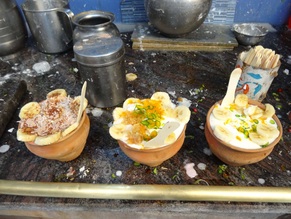 Mmmm...Lassis! In practice, this makes Varanasi essentially the world’s largest hospice, only minus the palliative care. A steady stream of elderly people travel there to take their last breaths and those whose lives ended prematurely are brought to Varanasi by their families to be washed in the river before being cremated on the steps of certain “burning ghats”. We would sit at the Blue Lassi, an extraordinary place serving up freshly frothed yogurt mixed with pomegranate and shredded apple in little clay cups, and watch a procession of bodies pass us by on their way to the river via the circuitous streets of the old city. They were carried at shoulder height or higher on wooden stretchers, wrapped in shiny orange and silver sheets, the entire stretcher wreathed with orange flowers. 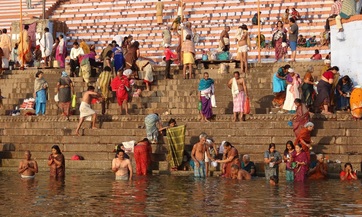 Pilgrims bathing and praying Exploring this riverside scene the day after my birthday was one of the most profound and dramatic days of my life. We met Eric, a fellow Buddhist hailing from Colorado, who joined us on the walk along the ghats. It was a beautiful morning and the ghats’ peaceful atmosphere was punctuated by the sight of the pilgrims washing themselves and singing out morning prayers. Everything changed, however, when we reached the main burning ghat, where rituals for the dead and cremation are performed in public. The energy of the area immediately changed and overwhelmed us with sadness, curiosity and contemplation. The buildings behind the ghat have a black hue from the constant stream of smoke arising from the square cremation pyres that rest on the river’s edge. Stacked wood rises several stories in the air, ready to be weighed and purchased by pilgrims wishing to cremate a loved one. The pyres sit burning on the river while within lie bodies in various states of incendiary transformation. In juxtaposition to the flame, we sat there frozen as we watched a family wash their son with the Ganga’s waters, removing bandages from bed sores, and then what appeared to be ghee (clarified butter) over his pale body. The two women involved seemed to be very stoic as they were preparing the body. After what felt like a very long time, they finally said their goodbyes and placed his body on a stack of wood and lit it. One of the women, we presume his mother, stumbled as she walked away from her burning son and nearly fainted, her face painted with a picture of utter grief that etched itself in our memories. I felt so many powerful emotions pooling together at that point - compassion for the pain laid out in front of us and an awareness of my own mortality nipping at my heels as I had just celebrated a birthday the day before. While the body was burning, in the background we watched as people tied bodies to heavy rocks and floated them out to the middle of the river to sink. Apparently some types of death (pregnant women, children, etc…) don’t call for burning, but for this ritual. On the other side of the ghat, body after body streamed down from the streets (from the spot I previously mentioned near Blue Lassi) was washed in the river, and then put on the cremation pyres. The visceral experience of watching the bodies vanish in the fires cannot be put into words, nor could my feelings as I watched the dogs circling around looking for remains to pick on. We couldn’t stay there any longer as the nauseating feeling became too strong, so we continued to explore the streets of the old city, at a loss of words. It seemed that in two days the whole cycle of life was thrusting itself into my awareness – the trauma of birth and the pain of death. 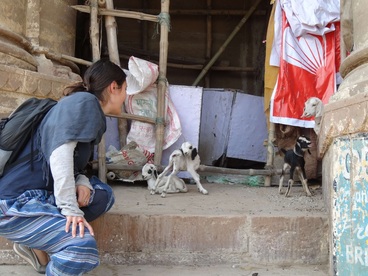 Playing with baby goats along Ganga But it didn’t just stop with the cremation ghats. Somehow it seemed the whole city was an embodiment of samsara (the cycle of birth and death). As we walked the streets, we saw a dead calf just laying in someone’s yard, while a chicken was picking on it. Dadi Aum told us that it’s not uncommon to see bulls lying dead in garbage heaps. They are not useful for their milk as females are, but the Hindu religion forbids their slaughter for meat. So instead they are just left to die, neglected and alone on the streets. We saw a litter of cute little puppies all huddled up together, some twitching and others still as they died from an unknown disease. But we also saw many mom doggies nursing their litters, baby lambs mewing out to us at every turn, and children playing innocently amidst the garbage littering the ghats (except for the kids who threw a piece of wood at Jeff’s head at night while walking back from the ghats – that wasn’t so innocent). If there is one thing we value about our spirituality, it is that it has given us a context to deal with these visceral extremes. We know that to close down to the pain we saw around us or to ignore the specter of death only leads to destructive behavior for us and others. But to open to the sobs of the women at the ghats, to move into the pain and the realities of samsara instead of cowering away, brings an equanimity that the Buddha encouraged us all to strive for. The city seems to be whispering “look, here is death laid out in front of you with no intermediary. This will happen to you. You can fear this truth or open to it. The choices you make will ripple through your life.” 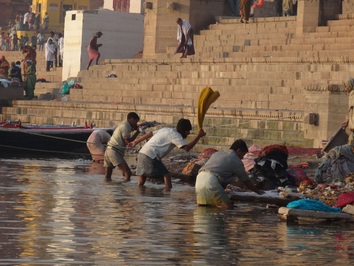 Laundry at the ghats of Ganga When Dadi Aum heard the call of the city, she sold her house in America and moved to Varanasi, becoming a Shiva devotee. She has rescued a bull she found dying in a trash heap and has tried to bring some dignity to the many who come here to die without the family or friends to help them through the process. For these elderly folks, the journey to Varanasi is meant to be their last one, but with no resources to their name, they just wander the streets, emaciated, weak, and waiting to die. Dadi Aum aspires to open a hospice-shelter to help these poor souls die with dignity – clean, dressed, and ready to open to source. It’s her way of trying to bring compassion to a place steeped in death. Perhaps it’s the secret of the city. If you can look past the veneer of cow dung littering the streets, men urinating around every corner, and 5 year olds carrying 2 year olds on their begging rounds, you can see the tremendous opportunity Varanasi offers a person who is working on the spiritual path. It offers the opportunity to tap into a current of human experience that is too often ignored by our Western society. It offers the opportunity to see the cycle of birth and death and find some peacefulness there instead of cold fear and rejection. For me, that was a birthday present that no material thing could match. This was indeed the most unusual birthday that will never be forgotten! If you read our previous post about New Delhi, you would know that we were feeling pretty harried with all the machinations required to book our travel through the “Golden Triangle” of Delhi to Agra to Jaipur and back. After many attempted scams, our driver did arrive on Saturday morning and we felt a swelling of relief that the ordeal was over. The driver, Rimesh, seemed like an affable fellow who spoke good English. He was telling us about how his family lives north in the mountains and how he works in Delhi to support them. Then, he pulled over on the side of the road and said, “My wife only visits a few times a year from the mountains and one of those times is during Diwali (the Indian Festival of Lights). So my cousin Kirssna will be your driver. We’ll just pull over here and pick him up.” Uh, oh. Our frazzled nerves from the previous few days had us wary of any changes that we hadn’t been told about. But we had little choice and a call to our travel agent assured us it wasn’t a problem. But in the end the change to Kirssna as a driver seemed to shroud the whole journey under a veil of bad luck. Kirssna spoke much less English than his cousin and as we petered out of traffic-congested Delhi with mosquitoes flying through our car, we discovered upon closing the windows that our “air conditioned” car had no working AC. Kirssna attempted to get it fixed at a road side shop, but in the end this only succeeded in killing off the alternator, leaving us broken down on the side of the road about 45 minutes from Agra. After a sweltering 2 – 3 hour wait for the waiting for a different car sent by the travel agency to pick us up, a 4-6 hour journey had ballooned into a 10 hour one and we were exhausted. Still, the drivers of the new car at least gave us a taste of what the region had to offer as we stopped in Sikandra to view the tomb of Akbar the Great, the Mughal Philosopher King who was uncommonly tolerant of different religions and viewpoint within his realm. He penned a philosophy known as Din-i-llahi (Faith of God), that spoke of the unifying thread of truth found in all religions. His mausoleum, which predates the Taj Mahal by several generations, is an imposing and delightful blend of red sandstone inlaid with marble geometric patterns that harkened us back to our travels through Andalusia. Though we hadn’t anticipated seeing it so late in day, as the sun set over the ancient tomb the sandstone blazed forth as if on fire and the visual effect was such that we instantly felt glad we had continued on this journey that seemed plagued with problems. That sentiment quickly eroded as, despite our exhaustion, the drivers insisted on taking us to a marble making shop, where an interesting description of the techniques used at the Taj Mahal to inlay the marble with semi-precious stones (called pietra dura) was followed by a harsh and hard sell by the shopkeeper. Insisting we were too tired to even think of shopping, we left the shop with a curse at our backs and feeling that the goodwill in India was in short supply. We were unceremoniously dumped at our hotel and our failed calls to our driver left little choices for dinner save the Pizza Hut next door. Just a few days in India and we were already eating at our second chain due to simply being unable to find authentic restaurants! It was fun however, to see the unique Indian items like the Spicy Paneer Quesadillas and Chicken Tikka Masala Pizza. We headed to bed early in anticipation of our sunrise viewing of the Taj. As morning came, we sat outside our hotel futilely trying to contact our driver. Realizing he wasn’t coming and that we would miss the sunset, we hired a private rickshaw and headed to the Taj ourselves. The sun was just lifting from the sky and we trundled through the massive red sandstone gate to get our first glimpse of this wonder of the world. And a wonder it is. The great Indian Poet, Rabindranath Tagore once likened the Taj to “A Teardrop on the Face of Eternity”. We stood gazing the at the wondrous sweeping curves of its onion-like white marble dome glowing sweetly to greet the new day. Its towering minarets stand guard over the tomb of Mumtaz Mahal and the view of the background sky is totally clean due to the huge elevated marble platform the Taj sits upon. The tourists surrounding us fell away. Time fell away. And for a moment there was just the beauty of this thing captivating our minds, flowing through our hearts. 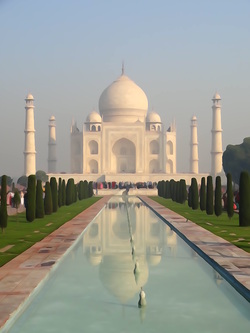 The Taj Mahal was built by the great Mughal builder Shah Jahan upon the loss of his wife after the birth of their 14th child. It took 20,000 craftsmen and workers from all over the world 22 years to finish the masterpiece – a building meant to represent the heavenly realm where Shah Jahan’s wife rested. In this way, it had parallels to the gorgeous palace of the Alhambra, which was an attempt by the Sultans there to create heaven on earth. What is most striking about the place is not something that can be captured in pictures. It is the juxtaposition that strikes one when in its presence. It both instills a deep peace at its beauty but also calls forth the yearning for love each of us feels – that makes each of us human. After the ordeal of the past few days, it felt like the Taj gave us that gift – it made us feel human again. We found ourselves laughing and joking as we left, energized by the visit and determined to feed our pain bodies no longer, but to embrace this trip no matter what it brought us. 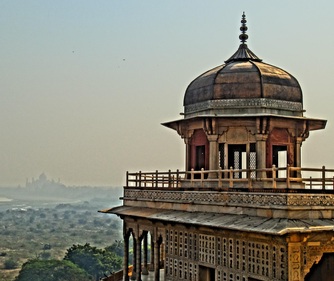 Nice view for a prison The rest of the day breezed by with a stream of marvelous sites. We finally located and were picked up by our driver, got a great breakfast of boiled eggs, herbed parathas, and dal in our bellies, and headed to Agra Fort, built by the aforementioned Akbar and retrofitted by his grandson Shah Jahan. Like the Red Fort in Delhi, Agra Fort started as a military base and later became a palace where royal affairs were carried out. Perhaps the most striking building at the fort was the Khas Mahal, a wonderfully carved marble palace that became the prison of Shah Jahan when his son Aurangzeb seized the throne and threw his father in prison. I found great irony in this because Shah Jahan is said to have immediately slain all competitors to his throne upon coming to power. But despite all this violence and grasping, his own karma came back to haunt him as the one person he wouldn’t slay, his son, seized the throne from him. His perch in the palace-turned-jail, however, did provide a stunning view of the Taj over the Yamuna River where Shah Jahan could look at his beloved each day. From Agra Fort, we headed 40km west of Agra where we stopped at Fatehpur Sikri, an abandoned city built by the ubiquitous Emperor Akbar. Akbar built this city out in the boondocks in honor of the Sufi Shaikh Salim Chisti, who had prophesized here that Akbar would father an heir to the Mughal throne. When the prophecy came true, Akbar set out to build this “perfect city” of good fortune and move his capital there. The plan only lasted for 15 years, after which Akbar died and the chronic water shortages of the area left the city abandoned for the more consistent water supply that had existed in Agra. 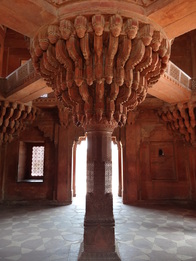 Diwan-i-Khas The result is an eerie city that had become a ghost-town within the same generation it was constructed. Our favorite site in the palace complex of the city was the Diwan-i-Khas (Hall of Private Audiences) with its intricately carved planked ceiling connecting a grouping of “wasps nests” at the 4 corners of the room and in the center. The hall was used for one of Akbar’s favorite pastimes – religious debate and discourse. We also loved the Panch Mahal, a five-story pavilion that reduces in size each floor until only a small gazebo remains. From there, Akbar relaxed while playing pachisi using his slave girls as pieces. This guy was certainly living up an Emperor’s life! 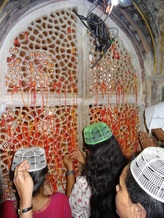 Finally we left the palace complex and headed to the great mosque of Jama Masjid, which contains the beautiful white marble tomb of Shaikh Salim Christi. His descendants still maintain the tomb and it is a flocking point for pilgrims wishing to bear children. Wishing for the good fortune the Sufi saint bestowed upon Akbar, they come to his mausoleum to offer prayers and tie little red strings around the lattice-work marble screens surrounding his tomb. By the time we got back into the car and started our 5 hour journey to Jaipur, we were exhausted but invigorated. The remains of the Mughal empire around Agra were a legacy of beauty, the celebration of life, and the many reminders of its impermanence. We looked forward to the next stop in the Golden Triangle, where we would celebrate Diwali in the Pink City of Jaipur and try out Couchsurfing in India for the first time!
Ahhh, India. Literally landing there was like stepping into a new world. A really, really dirty one. Upon exiting from the plane at 6am, our throats caught at the stringing sensation of inhaled smog. Our morning taxi ride to our hotel was like driving through a war zone of slowly awaking people along the roadside and a haze that seemed to set an implacable gloom over the whole city. We spent a few hours planning our onward journey, but were puzzled by seemingly fully booked trains and hard to reach bus stations with little information. So we took a brief nap and decided to worry about all that after our first foray into an Indian city. 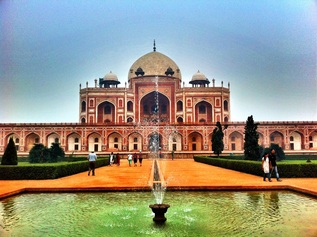 It started positively with a local restaurant serving delicious Punjab food. We were salivating over our perfectly spiced Aloo Gobi (potato and cauliflower curry), Mutter Paneer (green peas, cubes of pressed white cheese, and a creamy tomato curry sauce), and garlic naan. We got ourselves an Indian SIM card and set off on the Delhi Metro (the most crowded we have ever experienced) to Humayun's Tomb, the mausoleum of the son of the great Mughal Emperor Babur who had conquered Northern India from Kabul, Afghanistan in 1526. The tomb is an impressively massive structure built out of red sandstone and white marble – a merging of Persian and Indian influences. But the heavy fog combined with the smog nearly smudged out the sun and left the view slightly less mesmerizing. With a bit of time to wander in the evening we headed for Connaught Place, which lies in the center of New Delhi. It was the beginning of things going downhill very quickly for us in Delhi. We had read that the Deli Tourism Authority was in the area, but it was over an hour since it was supposed to have closed, so we just wandered around the various rings of streets emanating out from the center where the metro stop was looking for restaurants. At one point we turned and saw a place labeled “Delhi Tourism Authority” with an “Incredible India” symbol on its frosted glass door. I said to Neda, “oh, look there is the Tourist Office – is it still open?”. We pushed on the door and it looked like they were about to close, but one man there gestured for us to sit and said he could stay open a bit longer. We just wanted information on transportation options out of the city to Agra (home of the Taj Mahal) and then onward to Jaipur, the Pink City. Known as the “Golden Triangle” this popular tourist route covers many major sites in India. The man proceeded to sweet talk us into listening to him entirely too long, planning out a whole itinerary and offering to book trains for us that we knew were full, before I asked, “Is this the tourist office? Because it seems more like you are a travel agent.” He then lied to my face and said, “Of course, you didn’t know the Delhi Tourist Office offered these services?” Well, those services came to over 400 euros per person for things he couldn’t possibly fulfill. We wisely left without paying a dime, but tired of having spent much of the day trying to plan our escape from Delhi with no success. We resolved to finish the task the next day without any more scams. We headed off to the train station the next day, where we had read you could book trains directly and find out if any of the trains had seats remaining with a “tourist quota” that couldn’t be purchased online. The tourist office for this was supposed to be on the second floor. When we entered the train station, there was a barrier in front of the steps and a man approached us to tell us that the tourist office was closed for repairs but that we could buy the reserved tickets at the Tourism Office. He kindly pointed to where it was on the map and told us to have a good day. Since he hadn’t asked for anything we took him at his word and headed back to find the real Delhi Tourism Office. We rode the subway the one stop back to Connaught Place and as we were exiting a man walking along side of us started a casual conversation with us, asking what we thought of the Delhi Metro. As we continued to walk with him alongside of us, he found out we were going to the tourist office and said that it could be difficult to find because of all the fake offices. He said he was walking right by it though, and could point it out to us. Well, you may have guessed by now that this man had followed us (I know freaky!) from the train station and was just playing us to get us to yet another fake tourism office! This one was located on the same street as the tourism office (see pic below), making it difficult to know which is real since there are no street numbers anywhere! After another rigmarole with some similar themes as the previous time (“do you want to go to visit Kashmir and stay with a family there?”), and an inability to give us good information on public transport without planning a trip for us, we wisened up to the fact that this wasn’t a real shop and fled again, feeling foolish and exhausted (though at least not robbed!). Finally, we found the Government of India Tourism office on 88 Janpath road, the only office with a number marked on it! The man there told us that many of the trains and buses would be difficult to procure during this busy time (the popular Diwali Festival starts on Nov. 13th), but suggested we try a real travel agent who was next door or go back to the train station and try our luck again. Exhausted at this point, we went next door and finding a government licensed tourist agency, Destination India, we simply paid the extra money to hire a driver for 5 days to take us to Agra then to Jaipur and back to Delhi before leaving on a train to Armirtsar, home of the Golden Temple. Coming in at just about $45/day including two nights of hotels as well, it seemed just a heck of a lot easier than dealing with the congested and seemingly dysfunctional public transportation around Delhi. 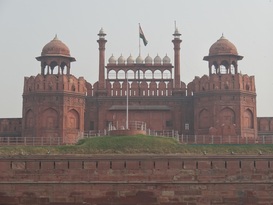 The Red Fort That night was a difficult one for us as we marveled and mourned at how elaborate the schemes were to trick us and rob us. We felt we couldn’t trust anyone in the city and just wanted to get out. We crossed our fingers that our driver would show up the day after next and vowed to enjoy our last day in Delhi, which we did. We visited the massive Jama Masjid mosque where Neda was forced to don a hilarious moo-moo that steamed her like a dumpling under the mid-day heat. Then we visited the Jain temple Lal Mandir, with its accompanying bird hospital. The Jain religion, originating around the time of Buddhism, holds the tenant of ahimsa (non-violence) as paramount and the bird hospital is seen as an embodiment of that. There, the caretakers rehabilitate everything from pigeons to peacocks that the faithful bring to them when found wounded. Finally, we visited the Red Fort, a palace built by Mughal Emperor Shah Jahan (who also built the Taj Mahal), where we saw the scattered remains of the red sandstone and marble structures that once held a small city within a city. The next day we woke up early and our driver was waiting for us outside the hotel. Yay! We weren't a scammed – or were we!? Read about our crazy trip to Agra next…
To see all the pics of our time in Delhi, click here: |